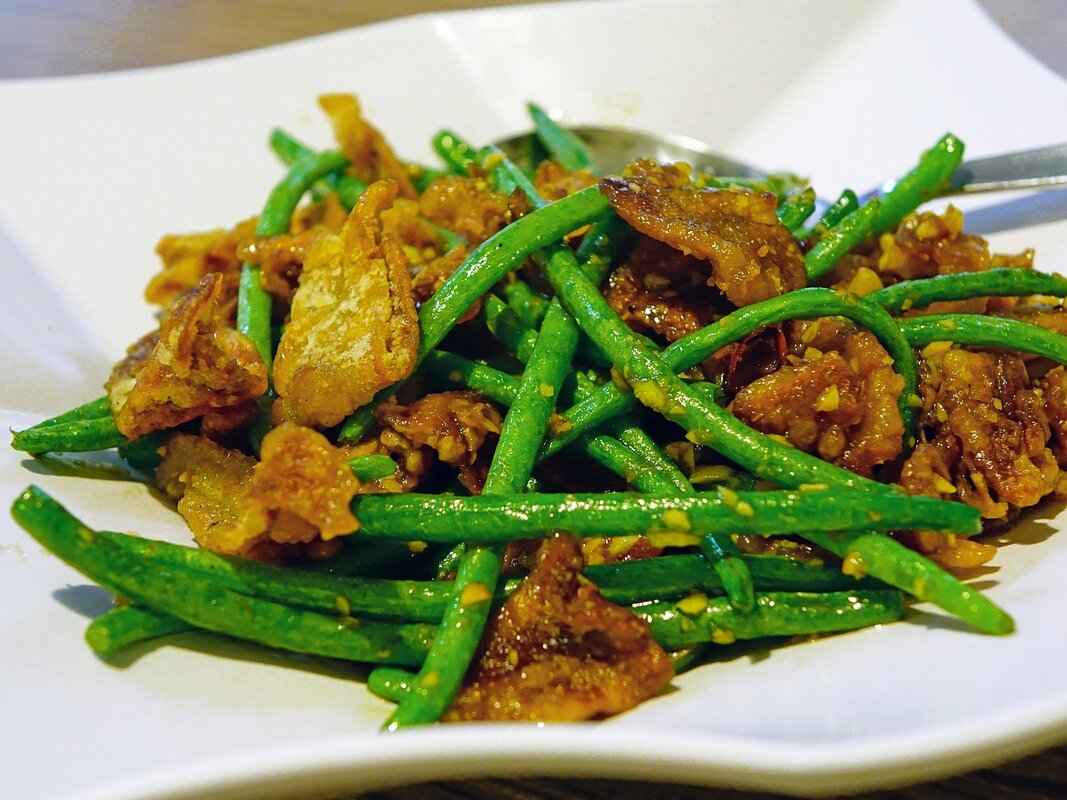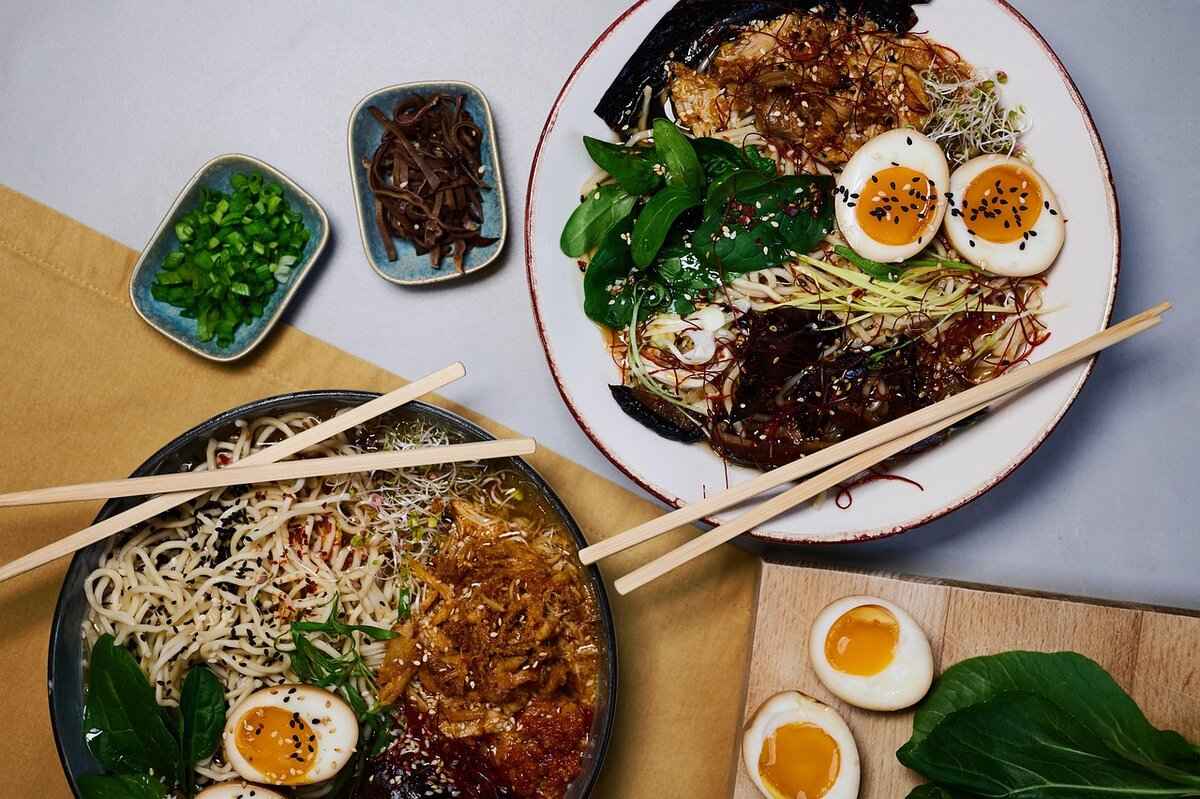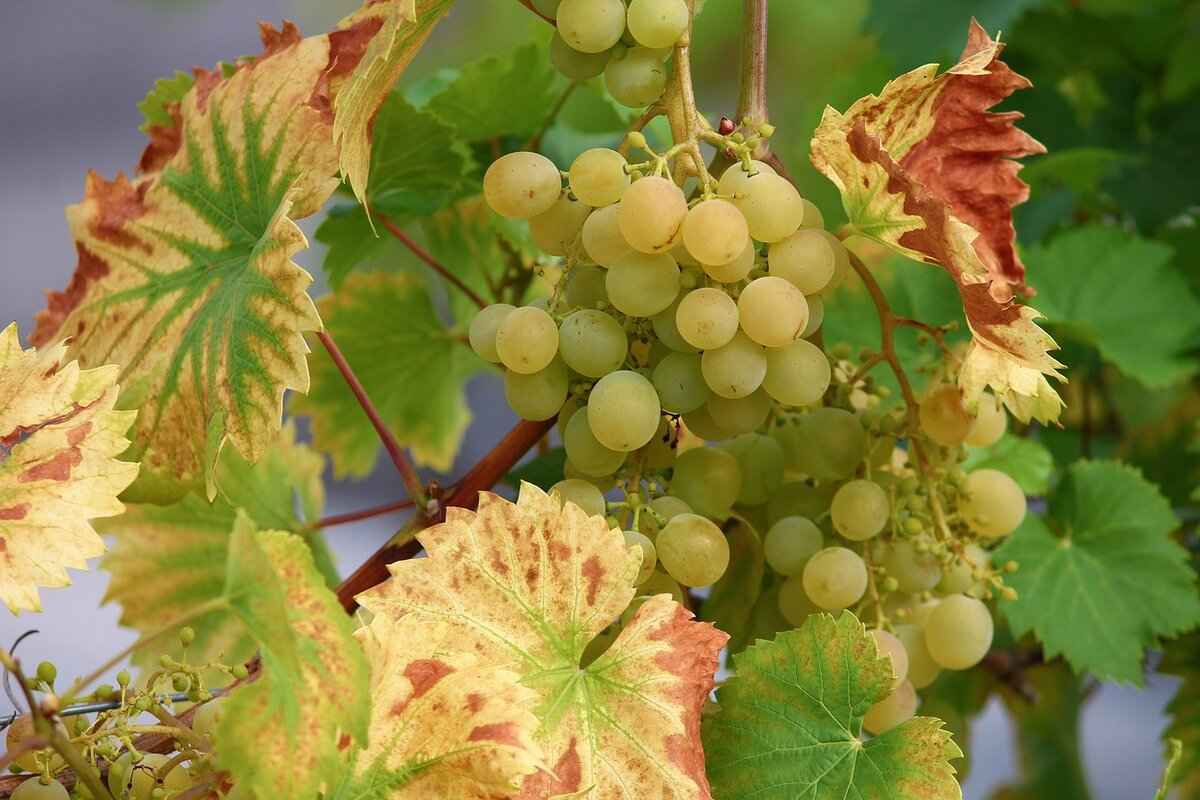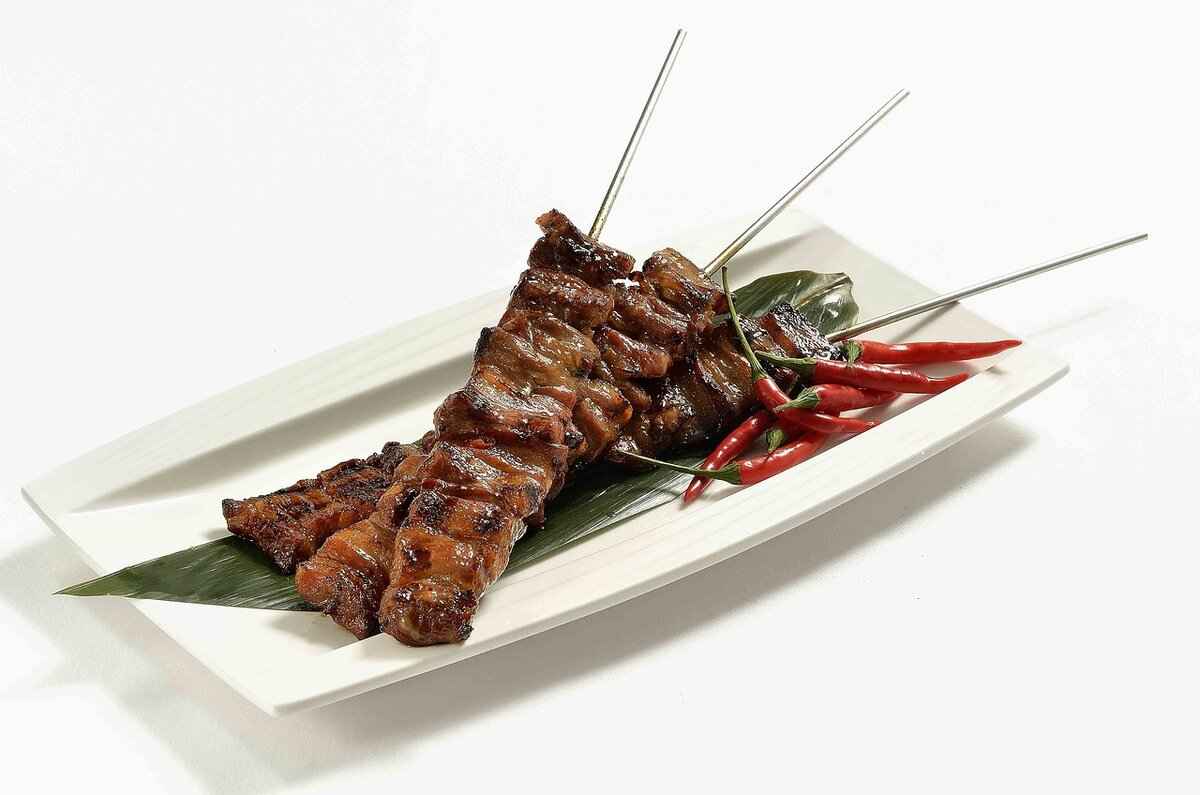This article explores the pivotal role food plays in Asian cultural festivals, highlighting its ability to foster community, celebrate heritage, and create connections among diverse groups. Food is more than just sustenance; it is a vital expression of culture and identity, particularly during vibrant celebrations that showcase the rich tapestry of Asian traditions.
Food serves as a cultural bridge, reflecting traditions and values while bringing people together. Understanding its significance can enhance appreciation for these vibrant celebrations. During festivals, the act of sharing food transcends language barriers, creating a sense of unity among attendees.
Asian cultural festivals showcase a rich variety of dishes, each telling a unique story. From street food to traditional delicacies, these offerings highlight regional flavors and cooking techniques. Here are some popular categories:
- Street Food: Often the heartbeat of festivals, street food vendors offer a plethora of affordable and delicious options.
- Traditional Dishes: Recipes passed down through generations that embody cultural heritage.
- Fusion Cuisine: Innovative blends of traditional and modern culinary practices, reflecting the evolving nature of cultural identity.
Food acts as a catalyst for social interaction, creating spaces for dialogue and connection. Festivals provide opportunities for community members to bond over shared meals and experiences. The communal aspect of dining encourages collaboration and interaction among festival-goers.
Communal dining fosters a sense of belonging, allowing individuals to connect beyond cultural boundaries. Sharing food creates an environment where stories are exchanged, and friendships are formed, enriching the festival experience.
Festivals attract diverse audiences, facilitating cultural exchange. Attendees can learn about different culinary practices, enhancing mutual respect and understanding among varied communities. This exchange often leads to a deeper appreciation of the nuances that define each culture.
Food is a powerful expression of cultural identity, allowing communities to celebrate their heritage. Festivals often highlight historical dishes that connect generations and promote cultural pride. Culinary traditions are vital for maintaining cultural identity, and festivals serve as a platform to showcase this.
Many festivals include workshops and demonstrations that teach younger generations about traditional cooking methods and ingredients. These initiatives are crucial for preserving culinary heritage and ensuring that future generations can appreciate and continue these traditions.
In times of change, food remains a steadfast symbol of cultural resilience. Festivals serve as a reminder of the importance of heritage, showcasing how communities adapt while preserving their culinary roots. This resilience is often reflected in the dishes that are served, which tell stories of survival and adaptation.
Participating in Asian cultural festivals provides a unique opportunity to engage with diverse cultures through food. Here are some tips to make the most of your experience:
- Research Local Festivals: Finding local Asian festivals allows you to explore authentic cuisine and cultural practices. Websites and community boards often list events, making it easy to plan your visit.
- Engage with Vendors and Locals: Talking to food vendors and local attendees enriches your experience. They can provide insights into the dishes, their significance, and the stories behind them, enhancing your understanding of the culture.
In conclusion, food is an integral part of Asian cultural festivals, serving as a medium for connection, celebration, and cultural exchange. By understanding and participating in these culinary experiences, we can foster a deeper appreciation for the rich diversity that defines Asian cultures.

Why is Food Central to Asian Cultural Festivals?
Food plays an essential role in Asian cultural festivals, serving as a vibrant expression of community, heritage, and identity. By bringing people together, food transcends language barriers and fosters a sense of belonging among individuals from diverse backgrounds. Understanding the significance of food in these celebrations enhances appreciation for the rich tapestry of traditions that define Asian cultures.
Food serves as a cultural bridge, reflecting the unique traditions and values of various communities while simultaneously uniting them. Festivals are often a showcase of culinary diversity, where attendees can experience the flavors and cooking techniques that are unique to different regions. This connection to food not only highlights the significance of heritage but also creates an opportunity for individuals to share their stories and experiences.
During Asian cultural festivals, food acts as a catalyst for social interaction. It creates spaces for dialogue and connection, allowing festival-goers to bond over shared meals and experiences. The communal aspect of dining encourages collaboration and interaction, enabling individuals to connect beyond cultural boundaries. When people gather to share food, they engage in a collective experience that strengthens community ties.
Asian cultural festivals showcase a rich variety of dishes, each telling a unique story. From street food to traditional delicacies, these offerings highlight regional flavors and cooking techniques. For instance, in Southeast Asia, you might find delicious satay skewers, while in East Asia, dumplings take center stage. Each dish reflects the local ingredients, historical contexts, and cultural significance, enriching the festival experience.
Every Asian region boasts its own specialties influenced by local ingredients and historical contexts. This diversity allows attendees to explore different culinary landscapes and appreciate the intricate flavors that define each culture. For example, festivals in India may feature biryanis and curries, while those in Japan often highlight sushi and ramen. Each dish is a testament to the region’s culinary heritage and innovation.
Street food often takes center stage at festivals, offering affordable and accessible options for all attendees. Vendors serve up beloved snacks that evoke nostalgia and community spirit, making them integral to the celebration. The vibrant atmosphere of street food stalls, filled with enticing aromas and lively chatter, creates an immersive experience that invites festival-goers to indulge in the local flavors.
Traditional dishes, passed down through generations, embody cultural heritage. They often feature in festival feasts, allowing families to share stories and memories while enjoying time-honored recipes. By participating in these culinary traditions, communities can preserve their identity and pass on their rich history to future generations.
Modern Asian festivals increasingly feature fusion cuisine, where traditional recipes meet contemporary culinary trends. This innovation reflects the evolving nature of cultural identity in a globalized world, showcasing how food can adapt while still honoring its roots. Fusion dishes often combine flavors from different cultures, creating unique culinary experiences that appeal to a broader audience.
Festivals attract diverse audiences, facilitating cultural exchange. Attendees can learn about different culinary practices, enhancing mutual respect and understanding among varied communities. This exchange not only enriches the festival experience but also promotes cultural awareness, allowing individuals to appreciate the beauty of diversity.
In conclusion, food is central to Asian cultural festivals, serving as a powerful medium for connection, celebration, and cultural exchange. By understanding its significance, we can enhance our appreciation for these vibrant celebrations and the rich traditions they represent.

What Types of Dishes Are Featured in Asian Festivals?
Asian cultural festivals are vibrant celebrations that showcase the rich tapestry of culinary traditions across the continent. Food is not just a source of sustenance; it is a vital part of the cultural identity of various communities. The dishes served during these festivals tell stories of history, regional diversity, and the unique flavors that define each culture.
At the heart of Asian festivals is a diverse array of dishes, each reflecting the local ingredients and culinary techniques that have been passed down through generations. These offerings can be categorized into several key types:
- Street Food: Often considered the lifeblood of festivals, street food provides quick, affordable, and delicious options for festival-goers. From tacos in Thailand to takoyaki in Japan, these handheld delights allow attendees to sample a variety of flavors without committing to a full meal.
- Traditional Dishes: These are the cornerstone of any festival, often featuring recipes that have been cherished for decades. Dishes like dim sum from China or biryani from India not only satisfy hunger but also evoke a sense of nostalgia and cultural pride.
- Regional Specialties: Each region within Asia boasts its own unique flavors and cooking styles. For instance, spicy curries from Southeast Asia contrast sharply with the milder, more delicate flavors of Japanese cuisine. This regional diversity enriches the festival experience, allowing attendees to embark on a culinary journey.
- Fusion Cuisine: In today’s globalized world, fusion dishes are becoming increasingly popular at festivals. These innovative creations blend traditional recipes with contemporary culinary trends, such as kimchi tacos or sushi burritos, reflecting the evolving nature of cultural identity.
Each dish served at these festivals is more than just food; it is a culinary narrative that connects the past with the present. For instance, traditional dishes often come with stories of their origins, featuring ingredients that are significant to the community. This storytelling aspect adds depth to the dining experience, making each bite a journey through time.
Moreover, many festivals include cooking demonstrations and workshops, allowing attendees to learn about the techniques and ingredients that make each dish special. This interactive element not only enhances appreciation for the food but also fosters a deeper understanding of the culture behind it.
In summary, the dishes featured in Asian cultural festivals are a reflection of the continent’s rich culinary heritage. They showcase the diversity of flavors, the importance of tradition, and the creativity of modern chefs. By exploring these dishes, festival-goers can gain insights into the cultural significance of food and its role in uniting communities.
Regional Specialties: A Culinary Journey
Asian cultural festivals are a vibrant tapestry of flavors, colors, and traditions, where food plays a pivotal role in uniting communities. Regional specialties serve as a culinary journey that showcases the unique characteristics of each area, influenced by local ingredients and historical contexts. This diversity enriches the festival experience, allowing attendees to explore different culinary landscapes that reflect the rich cultural heritage of Asia.
Regional specialties are not just dishes; they are a representation of a community’s identity and history. Each dish tells a story, often passed down through generations, encapsulating the essence of the region’s culture. Festivals provide an ideal platform for these specialties to shine, allowing communities to celebrate their unique culinary practices while inviting others to experience them.
- Thai Green Curry: A fragrant and spicy dish that utilizes fresh herbs and ingredients, showcasing the balance of flavors that Thai cuisine is known for.
- Japanese Sushi: A symbol of meticulous craftsmanship, sushi reflects Japan’s deep connection to the sea and seasonal ingredients.
- Indian Biryani: A flavorful rice dish that varies by region, biryani represents the fusion of cultures, spices, and cooking techniques.
- Korean Kimchi: A staple in Korean cuisine, kimchi is a fermented vegetable dish that embodies the essence of Korean culinary tradition.
The use of local ingredients is crucial in defining regional specialties. For instance, coastal regions in Asia often feature seafood prominently in their dishes, while mountainous areas may rely on hearty grains and vegetables. This connection to the land not only enhances the flavors but also supports local farmers and economies. Festivals often highlight these ingredients, allowing attendees to appreciate the farm-to-table concept in action.
Festivals are a melting pot of flavors, where different regional specialties come together to create a rich culinary experience. Attendees have the opportunity to taste a variety of dishes, each with its own unique preparation methods and flavor profiles. This diversity encourages cultural exchange, as individuals share stories and traditions associated with their food.
Food is a profound expression of cultural identity. It serves as a reminder of where we come from and the traditions we hold dear. By showcasing regional specialties at festivals, communities reinforce their heritage and promote cultural pride. Sharing these dishes allows individuals to connect with their roots while also educating others about their culture.
To fully immerse yourself in the culinary journey of Asian cultural festivals, consider the following tips:
- Sample a Variety of Dishes: Don’t hesitate to try something new. Each dish offers a glimpse into the culture it represents.
- Engage with Food Vendors: Ask questions about the dishes and their origins. Vendors often have fascinating stories to share about their culinary practices.
- Participate in Cooking Demonstrations: Many festivals offer workshops where you can learn how to prepare traditional dishes, deepening your appreciation for the cuisine.
In conclusion, regional specialties are the heart of Asian cultural festivals, offering a unique opportunity to explore diverse culinary landscapes. By embracing these dishes, attendees not only celebrate the rich heritage of the regions but also foster connections that transcend cultural boundaries.
Street Food: The Heartbeat of Festivals
Street food is often regarded as the heartbeat of festivals, serving as a vibrant expression of culture and community. At these lively gatherings, vendors set up stalls offering an array of affordable and accessible food options, making it easy for attendees to indulge in a variety of flavors. From savory snacks to sweet treats, street food not only satisfies hunger but also evokes a sense of nostalgia and shared experience.
Street food plays a crucial role in fostering a sense of belonging among festival-goers. It is more than just food; it is a cultural artifact that reflects the heritage and traditions of the community. The act of sharing meals often leads to conversations and connections, enhancing the overall festival experience.
Festivals typically feature a wide range of street food options, each with its unique flavor profile and cooking style. Here are some popular categories:
- Grilled Delights: Skewers of marinated meats and vegetables, often cooked on open flames, are a crowd favorite.
- Fried Snacks: Items like spring rolls, samosas, and fried dumplings offer crispy textures and bold flavors.
- Sweet Treats: Desserts such as mochi, fried bananas, and sticky rice wrapped in leaves provide a perfect end to any meal.
Street food vendors often create an inviting atmosphere that encourages social interaction. The communal nature of eating encourages people to gather around food stalls, share their experiences, and engage in conversations. This interaction is vital for building relationships and fostering a sense of community.
Each dish served at festivals tells a story, often rooted in the history and traditions of the region. For instance, the preparation methods and ingredients used in street food can reveal much about local agricultural practices and culinary heritage. By enjoying these dishes, festival-goers participate in a living tradition that honors their ancestors.
Vendors are not just sellers; they are storytellers. Many have been in the business for generations, passing down recipes and techniques that have become integral to their cultural identity. Their passion for food shines through in the quality of their offerings, making each bite a testament to their heritage.
The uniqueness of street food lies in its local adaptations. For example, while tacos may be a staple in Mexican festivals, Asian festivals might feature banh mi or takoyaki. This diversity enriches the festival experience, allowing attendees to embark on a culinary journey that spans different cultures.
Many street food vendors prioritize sustainability by sourcing local ingredients and minimizing waste. This practice not only supports local farmers but also reduces the carbon footprint associated with transporting food. Festivals that highlight such vendors often promote a message of environmental responsibility.
In conclusion, street food is more than just a meal; it is a celebration of culture, community, and tradition. Its presence at festivals enhances the overall experience, offering attendees a chance to indulge in flavors that evoke memories and foster connections. As you explore the diverse offerings at these events, remember that each bite is a step into a rich tapestry of cultural heritage.
Traditional Dishes: Heritage on a Plate
Traditional dishes are more than just food; they are living artifacts that carry the weight of history and culture. Passed down through generations, these recipes serve as a vital link to our past, embodying the heritage and values of communities. They often take center stage during cultural festivals, where families gather to celebrate and share their culinary traditions, allowing for a rich exchange of stories and memories.
Traditional dishes are significant for several reasons. Firstly, they reflect the geographical and cultural diversity of a region. Ingredients and cooking methods are often influenced by local resources, climate, and historical events. For example, a dish made with rice might vary significantly from one region to another, showcasing the unique flavors and techniques of each culture.
During festivals, traditional dishes act as a catalyst for social interaction. Families come together to prepare and share meals, creating a sense of belonging and community. The act of sharing food encourages dialogue and strengthens relationships, allowing individuals to connect over shared experiences and cultural narratives.
- Peking Duck – A symbol of Chinese culinary excellence, often served during celebrations.
- Biryani – A fragrant rice dish from South Asia, rich in spices and history.
- Sushi – A Japanese delicacy that represents meticulous craftsmanship and tradition.
- Korean Kimchi – A staple side dish that embodies the essence of Korean culture.
The transmission of traditional recipes often occurs through family gatherings, where older generations teach younger ones the art of cooking. This practice not only preserves culinary techniques but also reinforces familial bonds. Workshops and cooking classes at festivals also play a crucial role in educating the community about their culinary heritage.
Traditional dishes serve as a powerful expression of cultural identity. They encapsulate the stories, struggles, and triumphs of a community, making them a vital part of cultural celebrations. Festivals highlight these dishes, allowing communities to showcase their unique culinary heritage and promote cultural pride.
Yes, traditional dishes can evolve while maintaining their core identity. As communities migrate and interact with different cultures, fusion cuisine emerges, blending traditional recipes with modern influences. This evolution reflects the dynamic nature of cultural identity, ensuring that traditional dishes remain relevant in a changing world.
To fully appreciate traditional dishes at cultural festivals, consider the following:
- Participate in Cooking Demonstrations: Engage with chefs and home cooks to learn about the preparation of traditional dishes.
- Ask Questions: Inquire about the history and significance of the dishes you encounter to deepen your understanding.
- Taste a Variety: Sample different dishes to experience the breadth of flavors and techniques that define a culture.
In summary, traditional dishes are not just meals; they are a celebration of community, history, and cultural identity. They allow families to share their heritage while fostering connections among diverse groups during festivals. By engaging with these culinary traditions, we not only honor the past but also contribute to the ongoing narrative of cultural exchange and resilience.
Fusion Cuisine: Blending Cultures Through Food
Fusion cuisine has become a hallmark of modern Asian festivals, where the culinary landscape is increasingly characterized by the blending of traditional recipes with contemporary culinary innovations. This phenomenon not only tantalizes taste buds but also serves as a reflection of the dynamic cultural identities that emerge in our globalized world.
At its core, fusion cuisine refers to the creative combination of culinary elements from different cultures, resulting in dishes that are both innovative and nostalgic. In the context of Asian festivals, this means that traditional flavors and cooking techniques are reimagined through modern lenses, creating a unique culinary experience.
The popularity of fusion cuisine in Asian festivals can be attributed to several factors:
- Globalization: As cultures intermingle, culinary boundaries blur, allowing chefs to experiment and innovate.
- Creativity: Chefs are inspired to create dishes that reflect their diverse backgrounds, appealing to a broad audience.
- Accessibility: Fusion dishes often incorporate familiar ingredients, making them more approachable for festival-goers.
Asian festivals showcase a plethora of fusion dishes that delight attendees. Some popular examples include:
- Sushi Burritos: A creative twist on traditional sushi, these oversized rolls combine sushi ingredients with burrito-style wraps.
- Korean Tacos: A delicious blend of Korean BBQ flavors served in a soft taco shell, merging two beloved culinary traditions.
- Ramen Burgers: A unique take on the classic burger, where ramen noodles replace the bun, offering an exciting texture and flavor combination.
Fusion cuisine serves as a powerful expression of cultural identity. By integrating elements from various culinary traditions, chefs tell stories of migration, adaptation, and innovation. This culinary dialogue allows communities to celebrate their heritage while embracing new influences.
Fusion cuisine offers several benefits during cultural festivals:
- Encourages Collaboration: Chefs from different backgrounds work together, fostering a spirit of collaboration and creativity.
- Promotes Inclusivity: By offering diverse food options, festivals become more inclusive, appealing to a wider range of tastes and preferences.
- Enhances Cultural Exchange: Attendees have the opportunity to experience the flavors of different cultures, promoting understanding and appreciation.
To fully enjoy the fusion cuisine offerings at Asian festivals, consider the following tips:
- Be Adventurous: Don’t hesitate to try new dishes that combine unexpected flavors. You might discover a new favorite!
- Ask Questions: Engage with vendors to learn about the inspiration behind their fusion dishes, enriching your culinary experience.
- Share Your Experience: Document your culinary journey on social media, sharing your favorite fusion dishes with friends and family.
In conclusion, fusion cuisine at Asian festivals is not just about food; it is a celebration of cultural diversity, creativity, and community. As culinary boundaries continue to expand, these festivals provide a vibrant platform to explore and enjoy the delicious results of blending cultures through food.

How Do Food and Community Interact During Festivals?
Food plays a crucial role in the dynamics of community interaction during festivals, serving as more than just sustenance. It acts as a catalyst for social engagement, creating an atmosphere where dialogue and connection thrive. Festivals provide a unique opportunity for community members to bond over shared meals and experiences, reinforcing social ties and cultural identities.
Food is inherently social. It brings people together, fostering a sense of belonging and unity. At festivals, the act of sharing a meal transcends individual differences, allowing attendees to engage in meaningful conversations and form new friendships. The communal experience of dining encourages collaboration, as people gather around tables or food stalls, exchanging stories and laughter over their favorite dishes.
When individuals come together to enjoy food, they engage in a ritual that is deeply rooted in many cultures. This communal dining experience not only enhances the festival atmosphere but also instills a sense of pride and belonging among participants. As people share their culinary traditions, they create lasting memories and strengthen their community bonds. Through shared meals, attendees can explore the rich tapestry of cultural identities that make up their community.
Festivals are melting pots of diverse cultures, and food serves as a bridge for cultural exchange. Attendees have the chance to taste dishes from various ethnic backgrounds, allowing them to appreciate different culinary practices. This exposure fosters mutual respect and understanding among diverse groups, as people learn about the history and significance behind each dish. Engaging with food vendors and local chefs can enhance this experience, providing insights into the cultural narratives that shape their culinary creations.
Food has the unique ability to promote inclusivity, inviting everyone to participate in the celebration. Festivals often feature a wide array of dishes catering to various dietary preferences, ensuring that all attendees feel welcome. By embracing diverse culinary offerings, festivals encourage cross-cultural interactions and allow individuals to bond over shared tastes. This inclusivity not only enriches the festival experience but also reinforces the idea that food is a universal language that unites people from all walks of life.
Engaging with food during festivals offers numerous benefits to the community. It supports local businesses and artisans, helping to sustain the local economy. Additionally, these interactions can lead to the development of new friendships and collaborations among community members. As people share their culinary skills and knowledge, they contribute to the preservation of culinary traditions and promote cultural heritage. Festivals become a platform for celebrating diversity while fostering a sense of unity and pride within the community.
Participating in food-centric community events can be a rewarding experience. Here are some practical tips to make the most of your festival experience:
- Research Local Festivals: Look for upcoming events in your area that celebrate cultural diversity through food.
- Engage with Vendors: Take the time to talk to food vendors and learn about the dishes they offer, their significance, and the stories behind them.
- Try New Dishes: Be adventurous and sample dishes you’ve never tried before to expand your culinary horizons.
- Participate in Workshops: Many festivals offer cooking demonstrations or workshops where you can learn about traditional cooking methods.
By immersing yourself in the food experiences offered at festivals, you can deepen your understanding of the community’s cultural fabric and strengthen social ties.
Building Relationships Through Shared Meals
Building relationships through shared meals is a fundamental aspect of many cultural practices, particularly in the context of festivals. During these vibrant gatherings, communal dining emerges as a powerful tool for fostering collaboration and interaction among festival-goers. Sharing food not only satisfies hunger but also nurtures a profound sense of belonging, allowing individuals to connect beyond cultural boundaries.
Communal dining plays a crucial role in festivals as it encourages social interaction and collaboration. When people gather around a table, sharing dishes and stories, they create an environment ripe for connection. This shared experience transcends language and cultural differences, promoting a sense of unity and understanding among participants.
When festival-goers partake in communal meals, they engage in a ritual of sharing that strengthens community ties. Food has a unique ability to evoke memories and emotions, and sharing meals can lead to the exchange of personal stories and cultural traditions. This interaction fosters a deeper understanding of one another’s backgrounds and experiences, enriching the festival atmosphere.
- Encourages Collaboration: Festival-goers often work together to prepare and serve food, enhancing teamwork and collaboration.
- Creates Lasting Memories: Shared meals become memorable experiences that people cherish long after the festival ends.
- Breaks Down Barriers: Food has the power to dissolve cultural barriers, making it easier for individuals from diverse backgrounds to connect.
- Promotes Inclusivity: Communal dining invites everyone to participate, ensuring that no one feels left out.
At festivals, the act of sharing food serves as a bridge between different cultures. As attendees sample dishes from various regions, they gain insights into the culinary practices and traditions that shape those cultures. This exchange not only enhances mutual respect but also fosters a sense of curiosity and appreciation for diversity.
Festivals are often a reflection of a community’s identity, with food at the heart of the celebration. By participating in communal dining, individuals reinforce their connection to their heritage while also embracing the richness of other cultures present at the festival. This dual appreciation helps cultivate a more inclusive community spirit.
To fully experience the benefits of communal dining at festivals, consider the following tips:
- Join Group Tables: Look for communal seating areas where you can easily engage with others.
- Try New Dishes: Be adventurous and sample dishes that you may not be familiar with, sparking conversations about ingredients and cooking methods.
- Share Your Own Stories: Don’t hesitate to share your own culinary traditions and experiences, inviting others to do the same.
- Volunteer: Many festivals welcome volunteers to help with food preparation and serving, providing a great opportunity to meet new people.
In summary, communal dining at festivals is a vibrant expression of culture and community. It encourages collaboration, fosters connections, and enhances the overall festival experience. By sharing meals, festival-goers not only celebrate their own traditions but also embrace the rich tapestry of cultural diversity that defines these gatherings.
Food as a Means of Cultural Exchange
is an essential aspect of many cultural festivals, particularly in Asia. These events serve as vibrant platforms where diverse communities come together to celebrate their heritage through culinary experiences. Festivals not only showcase regional dishes but also create opportunities for attendees to engage in meaningful cultural exchanges, fostering understanding and appreciation among different ethnic groups.
Festivals attract a wide array of attendees, from locals to tourists, creating a melting pot of cultures. As people gather to enjoy various dishes, they also share stories and traditions associated with those foods. This interaction allows individuals to learn about the cultural significance of different culinary practices, which enhances mutual respect and understanding. For instance, while savoring a traditional dish from a different culture, one can gain insights into the history and values that shape that cuisine.
Asian festivals are renowned for their culinary diversity. From spicy Thai curries to delicate Japanese sushi, each dish tells a unique story. Attendees can explore a wide range of flavors and cooking techniques that reflect the rich tapestry of Asian cultures. This exploration not only tantalizes the taste buds but also educates individuals about the ingredients and methods used in different regions, bridging gaps between communities.
Food is a powerful expression of cultural identity, serving as a means to preserve traditions and share them with others. At festivals, traditional dishes are often prepared using age-old recipes, allowing families to pass down their culinary heritage. This process of sharing food creates a sense of belonging and community, as people come together to celebrate their roots.
Shared meals play a crucial role in building relationships during festivals. When individuals gather around a table or food stall, they engage in conversations, share experiences, and connect over common interests. This communal dining experience fosters a sense of unity, allowing festival-goers to bond beyond cultural boundaries. As they share a meal, they also share laughter, stories, and memories, creating a tapestry of interactions that enrich the festival experience.
In times of change or uncertainty, food remains a steadfast symbol of cultural resilience. Festivals serve as a reminder of the importance of heritage, showcasing how communities adapt while preserving their culinary roots. For instance, during challenging times, families may come together to prepare traditional dishes, reinforcing their cultural identity and solidarity. This resilience is often celebrated at festivals, where food becomes a medium for storytelling and cultural pride.
Participating in cultural festivals is an excellent way to engage in cultural exchange through food. Here are some practical tips:
- Be Open to New Experiences: Approach each dish with curiosity and a willingness to learn about its cultural background.
- Engage with Vendors: Talk to food vendors about their dishes. They often have fascinating stories and traditions to share.
- Participate in Workshops: Many festivals offer cooking demonstrations or workshops. Engaging in these activities can deepen your understanding of culinary practices.
- Share Your Own Culture: Bring a dish from your own background to share, fostering a two-way cultural exchange.
In summary, food serves as a vital means of cultural exchange during festivals, creating opportunities for understanding and appreciation among diverse communities. By exploring different culinary practices, attendees can forge connections that transcend cultural boundaries, enriching their festival experience and promoting a sense of unity.

What Role Does Food Play in Celebrating Heritage?
Food is not just sustenance; it is a vibrant expression of cultural identity that connects individuals to their roots and communities. In Asian cultural festivals, food plays an essential role in celebrating heritage, allowing communities to showcase their rich histories and traditions. This article delves into the significance of food in these festivals and how it serves as a powerful tool for cultural expression.
Food acts as a living history, embodying the stories, traditions, and values of a community. Each dish tells a tale, often rooted in the region’s past, local ingredients, and historical events. For example, dishes like kimchi in Korea or pho in Vietnam are not merely meals; they are symbols of national pride and resilience, passed down through generations.
Traditional dishes are the heart of cultural festivals, as they provide a sense of continuity and belonging. These recipes, often safeguarded by families, are showcased during festivals, allowing participants to engage with their heritage. Festivals become a platform for storytelling, where families share not just food, but also the memories and traditions associated with these dishes.
- Dumplings – Found in various forms across Asia, dumplings symbolize wealth and prosperity.
- Ramen – A Japanese staple that reflects regional variations and personal touches.
- Chili Crab – A Singaporean dish that showcases the fusion of cultures.
Food festivals provide an opportunity for communities to celebrate their culinary heritage publicly. This celebration fosters a sense of pride among community members, allowing them to showcase their unique flavors and cooking techniques. Furthermore, it encourages younger generations to take interest in their culinary traditions, ensuring that these practices are not lost to time.
In times of change, food remains a steadfast symbol of cultural identity. Festivals serve as a reminder of the importance of heritage, showcasing how communities adapt while preserving their culinary roots. For instance, during periods of migration, traditional recipes may evolve, incorporating new ingredients while still honoring the original flavors. This adaptability illustrates the resilience of cultural identity through food.
Participating in cultural festivals is a fantastic way to immerse yourself in the heritage of food. Here are some tips to enhance your experience:
- Engage with Chefs and Home Cooks – Speak with those who prepare the food. Their stories can provide deeper insights into the dishes.
- Attend Cooking Demonstrations – Many festivals offer workshops showcasing traditional cooking methods.
- Explore Diverse Offerings – Be open to trying various dishes to fully appreciate the culinary diversity.
In conclusion, food is a powerful medium through which communities celebrate their heritage during festivals. By highlighting traditional dishes, promoting cultural pride, and fostering resilience, food serves as a vital link between past and present, allowing individuals to connect with their roots and each other.
Preserving Culinary Traditions
is crucial for the survival of cultural identity, especially within the vibrant tapestry of Asian communities. These traditions serve not only as a means of sustenance but also as a bridge connecting generations. Festivals play a significant role in this preservation, offering a platform for the transmission of age-old cooking methods and the use of traditional ingredients.
Culinary traditions are more than just recipes; they embody the values and heritage of a community. They provide a sense of belonging and identity, allowing individuals to connect with their roots. During festivals, these traditions take center stage, showcasing the rich history and cultural significance behind each dish.
Festivals often feature workshops and demonstrations where chefs and home cooks share their expertise with younger generations. These hands-on experiences allow participants to learn about traditional cooking techniques, such as:
- Fermentation methods used in pickling vegetables
- Steaming techniques for dumplings and buns
- Grilling methods for meats and seafood
By engaging in these activities, young people gain practical skills and a deeper understanding of their cultural heritage, ensuring that these traditions are not lost to time.
The ingredients used in traditional dishes often reflect the local environment and historical influences. For instance, rice is a staple in many Asian cuisines, symbolizing sustenance and prosperity. Festivals offer a unique opportunity to explore these ingredients through:
- Local markets showcasing fresh produce
- Cooking competitions that highlight ingredient-based challenges
- Food stalls featuring traditional dishes made with local ingredients
These experiences not only celebrate regional flavors but also educate attendees about the importance of sourcing ingredients sustainably.
Food has the remarkable ability to bring people together. During festivals, communal meals create a sense of unity among attendees. Sharing dishes allows individuals to bond over their experiences and stories, reinforcing community ties. This communal aspect is especially evident in:
- Potluck-style gatherings where everyone contributes a dish
- Family-style dining that encourages sharing
- Cooking classes that invite collaboration among participants
Through these interactions, culinary traditions are not only preserved but also enriched by the diverse perspectives of community members.
In times of change or adversity, culinary traditions serve as a steadfast reminder of a community’s resilience. Festivals become a space to celebrate heritage and adapt traditional recipes to modern tastes while maintaining their core essence. This adaptability is crucial for:
- Ensuring the relevance of traditional dishes in contemporary society
- Encouraging innovation while respecting historical practices
- Promoting cultural pride among younger generations
As communities evolve, these culinary traditions remain a source of strength and identity, showcasing how food can be a powerful symbol of cultural continuity.
Participating in local festivals is a great way to engage with culinary traditions. Here are some practical tips:
- Attend workshops to learn traditional cooking techniques.
- Volunteer at local festivals to help organize culinary events.
- Share your own family recipes and stories to contribute to the cultural narrative.
By actively participating, you not only gain knowledge but also play a part in preserving these vital traditions for future generations.
Food as a Symbol of Cultural Resilience
In a world that is constantly evolving, food stands as a timeless representation of cultural resilience. It serves not only as nourishment but also as a means of preserving traditions and fostering community connections. This is particularly evident during cultural festivals, where food plays a pivotal role in celebrating heritage and adapting to modern influences.
Food is more than just sustenance; it is a reflection of identity and history. In times of change, communities often turn to their culinary traditions as a way to maintain a sense of belonging. Festivals provide a platform for these traditions to thrive, showcasing how food can be both a link to the past and a bridge to the future.
During cultural festivals, a diverse array of dishes is presented, each with its own story. From ancient recipes passed down through generations to innovative fusion dishes that reflect modern influences, food at these events highlights the rich tapestry of cultural narratives. Festivals encourage attendees to explore and appreciate the depth of culinary traditions.
Traditional dishes often take center stage during festivals, embodying the heritage of a community. These meals are typically prepared using age-old techniques and local ingredients, allowing families to share their culinary stories. For instance, a family recipe can evoke memories of celebrations, gatherings, and cultural pride, serving as a reminder of the resilience of their heritage.
In addition to traditional dishes, many festivals now feature fusion cuisine. This blending of culinary styles reflects the dynamic nature of cultural identity, showcasing how communities adapt while still honoring their roots. Fusion dishes often attract a younger audience, making them an essential part of the festival experience.
Food acts as a catalyst for social interaction during festivals. It creates opportunities for dialogue, allowing people from diverse backgrounds to come together and connect over shared meals. This communal aspect of dining fosters a sense of belonging and unity, transcending cultural barriers.
When festival-goers gather around communal tables to enjoy meals, they are not just sharing food; they are sharing experiences and stories. This interaction encourages collaboration and understanding, reinforcing the idea that food can unite us, regardless of our backgrounds.
Festivals often attract a diverse audience, facilitating cultural exchange through food. Attendees have the chance to learn about different culinary practices and traditions, enhancing mutual respect and understanding among various communities. This exchange is crucial in promoting cultural appreciation and awareness.
Food serves as a powerful expression of cultural identity, allowing communities to celebrate their heritage. Festivals are often a time for families to come together and honor their traditions through food, reinforcing their cultural ties.
Many festivals include workshops and demonstrations aimed at teaching younger generations about traditional cooking methods and ingredients. This focus on education is vital for maintaining cultural identity and ensuring that culinary traditions are passed down, helping to preserve a community’s heritage.
In times of uncertainty, food remains a steadfast symbol of cultural resilience. Festivals highlight the significance of culinary heritage, showcasing how communities adapt while preserving their roots. This adaptability is essential in a rapidly changing world, reminding us of the importance of maintaining our cultural identities.
Participating in cultural festivals is an excellent way to experience the richness of diverse cuisines. Here are some tips to enhance your experience:
- Explore Local Festivals: Research and find local cultural festivals that celebrate Asian heritage. These events often feature authentic cuisine and cultural practices.
- Engage with Vendors: Take the time to talk to food vendors and local attendees. They can provide valuable insights into the dishes and their cultural significance.
- Participate in Workshops: Look for cooking demonstrations or workshops that allow you to learn about traditional cooking methods.
By immersing yourself in the culinary experiences at these festivals, you can gain a deeper understanding and appreciation for the cultural resilience that food represents.

How Can You Experience Asian Cultural Festivals?
Experiencing Asian cultural festivals is an enriching journey that allows individuals to immerse themselves in the vibrant tapestry of traditions, customs, and, most importantly, food. These festivals are not just celebrations; they are opportunities to connect with diverse communities and appreciate their unique heritage. Below are some valuable tips to help you make the most of your experience at these lively events.
To truly appreciate the culinary diversity at Asian cultural festivals, start by researching local events. Many cities host annual festivals celebrating various Asian cultures, where you can explore authentic cuisine, music, and art. Check community boards, social media, and local event listings to find festivals near you. Understanding the specific cultural background of the festival can enhance your appreciation for the food and activities presented.
When attending these festivals, take the time to engage with food vendors and local attendees. Vendors often have deep knowledge of the dishes they serve, including their origins and significance. Asking questions not only enriches your experience but also helps you understand the cultural stories behind each dish. Locals can provide invaluable insights and recommendations, making your culinary adventure even more memorable.
Asian cultural festivals typically feature a wide array of dishes, from street food to more elaborate traditional meals. Don’t hesitate to sample different foods; this is a chance to explore flavors that may be new to you. Consider sharing dishes with friends or fellow festival-goers to experience a broader range of tastes. This communal approach not only enhances your culinary experience but also fosters social interaction.
Many festivals offer cooking demonstrations and workshops that allow attendees to learn about traditional cooking techniques and ingredients. Participating in these sessions provides a hands-on experience, deepening your understanding of the culinary arts. You may even pick up a few recipes to try at home, keeping the cultural connection alive long after the festival ends.
Food is just one aspect of Asian cultural festivals; cultural performances such as traditional dances, music, and art displays are equally significant. These performances provide context to the food you enjoy, showcasing the rich heritage and customs of the community. By attending these events, you gain a holistic understanding of the culture, enhancing your appreciation for the food.
Bring a camera or use your smartphone to document your festival experience. Capture images of the dishes, performances, and vibrant decorations. Not only will this help you remember the event, but sharing your photos and experiences on social media can also encourage others to explore these cultural celebrations. Remember to tag the festival and use relevant hashtags to connect with fellow attendees.
Finally, approach your festival experience with an open mind and respect for the cultures represented. Every dish has a story, and understanding these nuances is essential for a fulfilling experience. Be mindful of cultural sensitivities, and embrace the opportunity to learn from others. Your respectful engagement will foster goodwill and enrich your interactions with the community.
By following these tips, you can transform your visit to Asian cultural festivals into a meaningful exploration of food, culture, and community. Each festival is a celebration of heritage, offering a unique chance to connect with diverse cultures through the universal language of food.
Research Local Festivals
When it comes to immersing yourself in the rich tapestry of Asian cultures, exploring local festivals is one of the most rewarding experiences. These events not only showcase vibrant traditions but also offer a unique opportunity to indulge in authentic cuisine. With a plethora of festivals happening year-round, finding one near you can be an exciting adventure.
Researching local Asian festivals allows you to connect with diverse communities and experience their cultural heritage. These festivals often feature traditional performances, art exhibits, and, most importantly, a wide array of culinary delights. By participating, you can:
- Discover authentic dishes that represent the region’s heritage.
- Engage with local artisans and chefs who are passionate about their craft.
- Learn about the cultural significance of various foods and practices.
Various resources can help you locate upcoming Asian festivals in your area:
- Community Boards: Local community centers often post announcements about cultural events.
- Social Media: Platforms like Facebook and Instagram frequently feature event pages where you can RSVP and share with friends.
- Official Websites: Many cities and cultural organizations maintain websites that provide detailed information about annual festivals.
- Event Aggregators: Websites such as Eventbrite or Meetup can also help you discover cultural events, including food festivals.
Once you’ve found a festival to attend, prepare for an enriching experience filled with culinary delights and cultural immersion. Here’s what to expect:
- Diverse Food Stalls: Vendors often set up stalls offering a variety of dishes, from street food to gourmet meals. You can sample everything from dim sum to ramen and traditional sweets.
- Cooking Demonstrations: Many festivals feature live cooking demonstrations where chefs showcase traditional techniques and share recipes.
- Cultural Performances: Enjoy traditional music, dance, and art that reflect the community’s heritage, enhancing your understanding of the cultural context behind the food.
To fully enjoy your time at an Asian festival, consider the following tips:
- Arrive Early: Get to the festival early to avoid long lines and ensure you can try all the food you want.
- Engage with Vendors: Don’t hesitate to ask vendors about their dishes. Many are eager to share stories about their recipes and cultural significance.
- Participate in Workshops: If available, join cooking classes or workshops to learn more about Asian culinary traditions.
Local Asian festivals do more than just celebrate culture; they foster community spirit and unity. By bringing people together, these events help:
- Preserve Cultural Heritage: Festivals play a crucial role in keeping traditions alive, especially for younger generations.
- Encourage Cultural Exchange: Attendees from different backgrounds can share experiences and learn from one another.
- Support Local Economies: Festivals provide a platform for local businesses, artists, and food vendors to thrive, contributing to the community’s economic health.
In conclusion, researching and attending local Asian festivals is a fantastic way to celebrate culture, enjoy delicious food, and connect with your community. With a little effort, you can discover a world of flavors and traditions right in your own backyard.
Engage with Vendors and Locals
Engaging with food vendors and locals at Asian cultural festivals is an invaluable part of the experience. These interactions not only deepen your appreciation for the dishes but also provide a unique perspective on the culture and community that surrounds the festival. By taking the time to converse with those who prepare and serve the food, you gain insights that go beyond mere flavors and ingredients.
Food vendors are often the heartbeat of cultural festivals. They are usually passionate individuals who have dedicated their lives to preserving culinary traditions. When you engage with them, you open the door to a wealth of knowledge. Vendors can share the history of the dishes they serve, explain the significance of certain ingredients, and even recount personal stories that highlight their connection to the food. This interaction transforms a simple meal into a narrative experience, enriching your understanding of the culture.
In addition to vendors, local attendees often have their own stories and insights to share. By striking up conversations with fellow festival-goers, you can learn about their experiences and perspectives. This dialogue fosters a sense of community and belonging, making the festival feel more intimate and personal. You may discover shared experiences or cultural similarities that deepen your connection to the food and its significance.
Many dishes served at festivals carry deep cultural meanings and traditions. For instance, a vendor might explain how a particular dish is prepared during special occasions or festivals in their culture. Understanding these nuances allows you to appreciate the food on a deeper level. You might learn that a dish symbolizes prosperity or is traditionally served during family gatherings, enriching your overall experience.
As you engage with food vendors and locals, consider asking specific questions about the dishes. Inquire about the origins of certain recipes, the cooking techniques used, and the stories behind them. This curiosity can lead to fascinating discussions, revealing the layers of history and tradition that shape the culinary landscape. Additionally, many vendors are eager to share tips on how to recreate these dishes at home, allowing you to continue your culinary journey long after the festival ends.
Many festivals offer tastings and cooking workshops led by local chefs and vendors. These opportunities allow you to engage actively with the food culture. Participating in a workshop can provide hands-on experience in preparing traditional dishes, while tastings offer a chance to sample a variety of foods. Engaging in these activities not only enhances your understanding of the cuisine but also strengthens your connection to the community.
Every conversation you have with a vendor or local attendee contributes to a tapestry of memories that you will carry with you. The stories shared, the laughter exchanged, and the knowledge gained all serve to create a rich experience that goes beyond the food itself. These interactions can lead to friendships and connections that last long after the festival has ended.
In conclusion, engaging with food vendors and local attendees at Asian cultural festivals is a rewarding experience that enriches your understanding of the culture. By taking the time to converse and connect, you not only enhance your culinary journey but also contribute to the vibrant tapestry of community and tradition that these festivals celebrate.
Frequently Asked Questions
- What is the significance of food in Asian cultural festivals?
Food serves as a cultural bridge, reflecting traditions and values while bringing people together. It enhances the festival experience by allowing attendees to appreciate the rich heritage and diverse culinary practices that define these vibrant celebrations.
- What types of dishes can I expect at these festivals?
Asian cultural festivals showcase a delightful array of dishes, from street food favorites to traditional delicacies. Each dish tells a unique story, highlighting regional flavors and cooking techniques that vary across different Asian cultures.
- How does food foster community during festivals?
Food acts as a catalyst for social interaction, creating spaces for dialogue and connection. Sharing meals encourages collaboration and fosters a sense of belonging, allowing individuals to bond over their shared culinary experiences.
- Can I learn about culinary traditions at these events?
Absolutely! Many festivals include workshops and demonstrations that teach attendees about traditional cooking methods and ingredients. This is a fantastic way to preserve culinary heritage and pass it on to younger generations.
- How can I find local Asian cultural festivals to attend?
Researching local festivals is simple! Websites and community boards often list upcoming events. Engaging with local communities can also lead you to authentic experiences that celebrate diverse Asian cultures through food.














